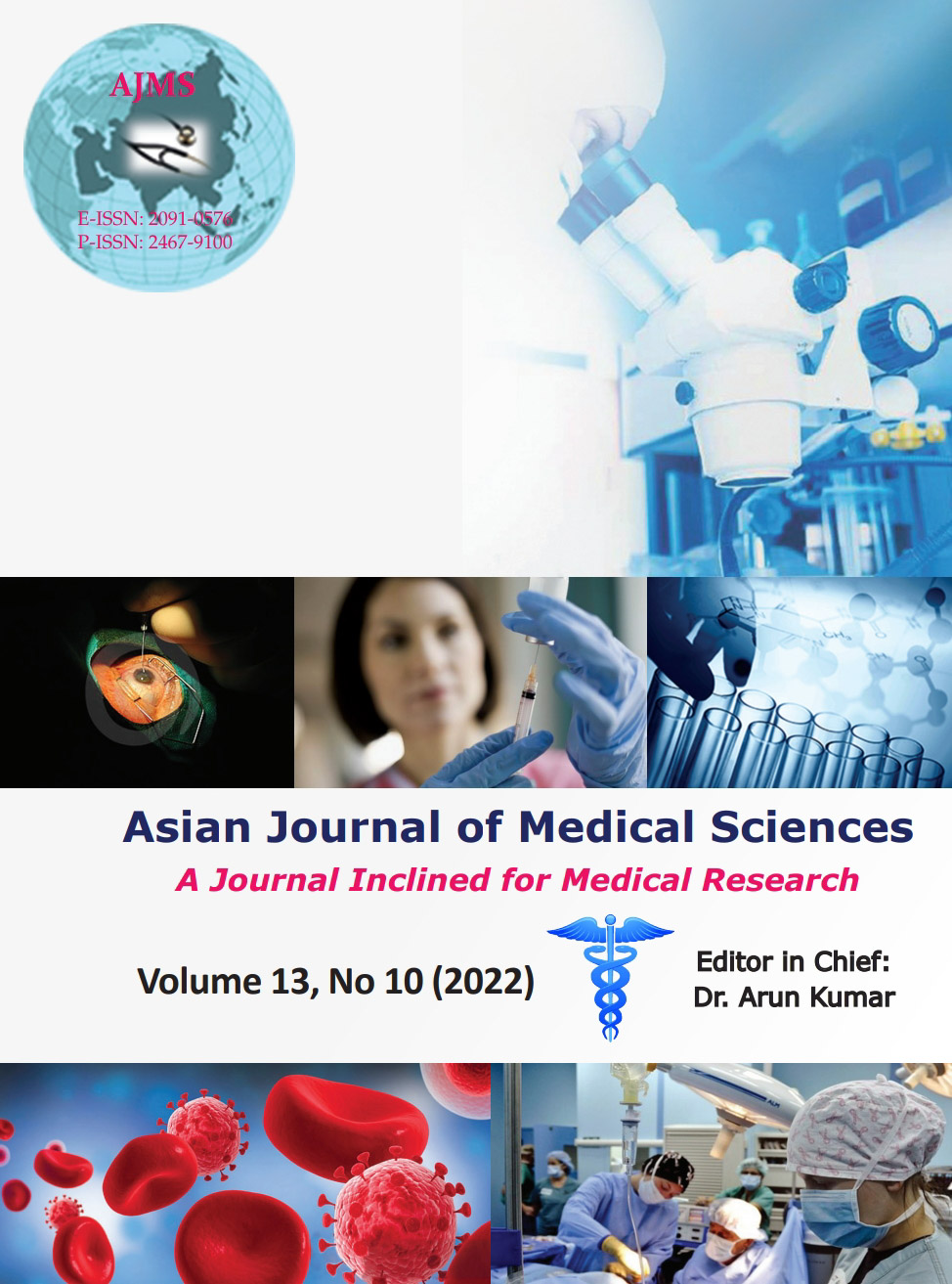A study of “rational use of investigations” in a tertiary hospital
Keywords:
Rational; Investigations; Tertiary hospitalsAbstract
Background: Rational laboratory use is defined as effective and correct laboratory use by providing the most appropriate test selection with the right clinical approach in line with the evidence-based data and considering the cost and patient safety. The present study was thus conducted for the prevalence and features associated with rational use of investigations in a tertiary hospital.
Aims and Objectives: The objectives of the study were to estimate prevalence of rational use of investigations and its associated confounding factors; to explain the educational approach underlying the study; and to explain how to teach rational approach of investigations so that we reduce the use of unnecessary and inappropriate tests which are not likely to have any ill effects on the patient.
Materials and Methods: A cross-sectional study including 100 patients was selected by random sampling from medicine and orthopedic wards and OPD.
Results: In our study,we observed 29 different types of clinical and laboratory investigations out of 2155 investigations ordered by physicians before any intervention. These investigations done in 100 patients, among those 39.16% were contributed to the management of patients and 60.83% were not considered to have contributed toward management of patients.
Conclusion: Several external and internal factors can promote irrational use of investigation at different stages. Hence, understanding these factors and implementing appropriate measures are key steps to change behavior of prescriber and nursing staff. We must have logic-based flow chart or algorithm in all investigations for diagnosis as a part of good laboratory or good clinical practices.
Downloads
Downloads
Published
How to Cite
Issue
Section
License
Copyright (c) 2022 Asian Journal of Medical Sciences

This work is licensed under a Creative Commons Attribution-NonCommercial 4.0 International License.
Authors who publish with this journal agree to the following terms:
- The journal holds copyright and publishes the work under a Creative Commons CC-BY-NC license that permits use, distribution and reprduction in any medium, provided the original work is properly cited and is not used for commercial purposes. The journal should be recognised as the original publisher of this work.
- Authors are able to enter into separate, additional contractual arrangements for the non-exclusive distribution of the journal's published version of the work (e.g., post it to an institutional repository or publish it in a book), with an acknowledgement of its initial publication in this journal.
- Authors are permitted and encouraged to post their work online (e.g., in institutional repositories or on their website) prior to and during the submission process, as it can lead to productive exchanges, as well as earlier and greater citation of published work (See The Effect of Open Access).




